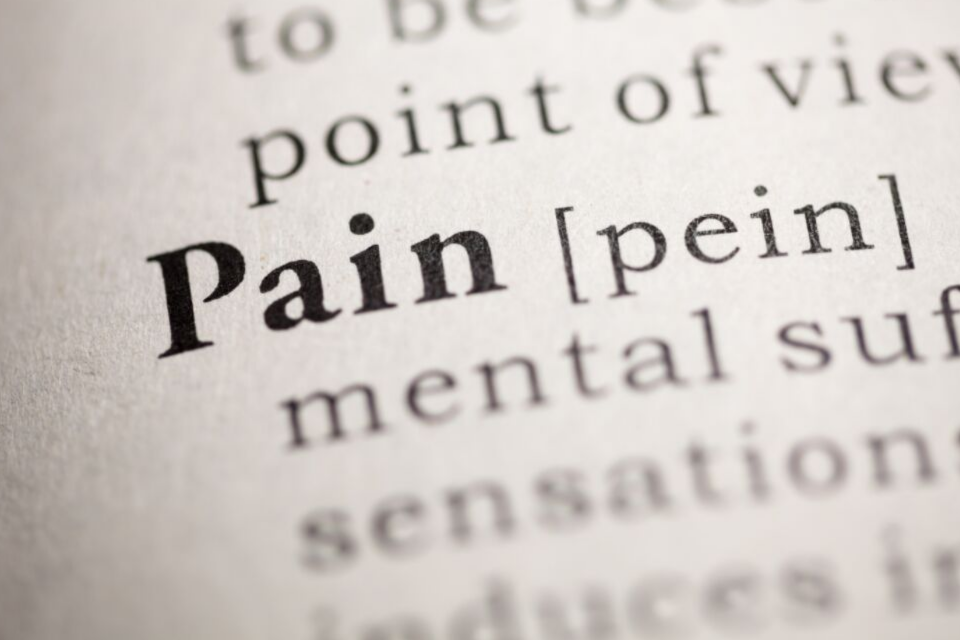By Samantha Gemmell (Guest Post)
Everyone experiences pain from time to time. But chronic pain is a different experience altogether. Sometimes there is a known cause, and sometimes it is a mystery. This makes it a confusing condition to deal with.
As a qualified nutritionist, I know that there are many ways to manage pain naturally. But as a person who has managed her own chronic pain for over 7 years, I also know that sometimes management is easier said than done!
That’s why I offered to share some of my knowledge about chronic pain, along with some helpful tips for coping when you are in pain.
What is Chronic Pain?
Chronic pain is defined as pain that lasts for a long period of time. Some definitions say chronic pain is pain lasting more than 3 months, and others state more than 6 months. But for many, chronic pain can go on for many months, years and even decades, depending on the cause.
Chronic pain can also lead to other symptoms such as chronic fatigue, brain fog and mental health concerns including anxiety and depression. Chronic pain management is key for minimising the impact of these symptoms.

Difference Between Acute Pain and Chronic Pain
Simply put, acute pain is pain that is experienced short-term – less than 6 months. It is usually caused by injury, trauma or an acute illness such as the flu.
Acute pain is the pain you experience when you stub your toe, give yourself a paper cut, or even break your ankle. You might feel it for a few seconds or a few months, depending on how severe the cause is. For example, you would expect a papercut to stop hurting much sooner than a broken ankle.
But although chronic pain can start out as acute pain, it isn’t just long-term acute pain. The nature of pain changes as it goes on.
The pain is no longer about the actual damage that occurred, but the way that your brain is responding to perceived damage. Your nervous system can actually rewire itself in response to ongoing pain!
This is part of why chronic pain is more difficult to treat than acute. You can’t just take Panadol and expect it to "go away”.
Causes of Chronic Pain
There are many potential causes of chronic pain, as well as many factors that contribute to it or even exacerbate it. Sometimes, it can be a perfect storm of several risk factors coming together that leads to chronic pain.
Some of the potential risk factors for chronic pain include:
- A previous injury that may not have healed properly
- Pain-related conditions including osteoarthritis, rheumatoid arthritis, fibromyalgia
- Other health conditions such as cancer, multiple sclerosis (MS)
- Some medications that can have pain as a side effect
- Specific genes, such as one that affects your serotonin production
- Trauma
- Ongoing and/or high levels of stress
- Smoking
So what causes chronic pain to actually occur? There are many theories and mechanisms that can lead to chronic pain. But most of them involve the nervous system’s role in the experience of pain.
One example is the pain matrix. The pain matrix is a collection of areas of the brain that process information from the nerves that tell us when we’re injured or in danger. It can increase or decrease your sensitivity to these messages.
With chronic pain, the nervous system can also alter the number of nerve connections and the release of neurotransmitters, or brain chemicals. These changes increase the sensitivity to pain messages.
Inflammation can also play a role in chronic pain. The compounds produced during inflammation can imprint a painful response in the brain, even after the original cause is removed.

Managing Chronic Pain
Chronic pain management is often complex. What works for one person may not work for another, depending on their current state of health and the root causes of their pain. With that in mind, here are five suggestions to help you manage chronic pain:
1) Make a plan for your pain
If you are experiencing chronic pain, there’s a good chance you experience flares. Flares aren’t always avoidable, but you can plan for them. So put together a list of things to get you through a flare such as:
- Easy snacks and meals for when you’re not hungry or can’t prepare healthy food
- A priority list of tasks that are essential to keep your life going – any tasks that don’t make this list need to be delegated, delayed or ditched!
- A pain first-aid kit (which I’ll explain below)
- One or more friends/family members who you can call if you need help
2) Have some pain relief remedies at home
Sometimes pain strikes when you’re home alone. That’s why I often suggest people put together their own pain first aid kit together.
Some of the items you’ll find in my kit include:
- Heat packs – wheat bags for home use and stick-on heat packs in case I need to go out that day
- Kunzea Cream – having some type of topical therapy is great for soothing pain. I love kunzea because it has anti-inflammatory properties.
- Magnesium salts – to pop into a warm bath or even a foot bath if I can’t manage a full bath.
- Calming essential oils – to help manage my stress, as I know stress and anxiety amp up my pain experience. I always use Australian brands wherever possible
3) Eat a nutrient-dense, anti-inflammatory diet
Pain and its many side effects can churn through a lot of vital nutrients. These nutrients are the same ones that nourish the nervous system and protect us from further injury, illness and pain. So it can become a bit of a downward spiral if you’re not careful.
That’s why getting plenty of nutrients in every day is essential for anyone who experiences chronic pain. Some of the most nutrient-dense foods include fruit, vegetables, herbs, spices, nuts, seeds, meat, eggs, fish and whole grains.
As inflammation is believed to play a role in chronic pain, reducing chronic inflammation through an anti-inflammatory diet can also be beneficial. You can learn more about an anti-inflammatory diet here: https://www.zearelief.com/blogs/news/anti-inflammatory-foods
4) Put together a support team
Many people with chronic pain benefit from a variety of healthcare providers on their team. Health practitioners can assist with areas such as:
- Physical or musculoskeletal health – physiotherapists, myotherapists and massage therapists
- Mental health – psychologists, psychiatrists and counsellors
- Holistic health – naturopaths, nutritionists and acupuncturists
- At-home management – occupational therapists and social workers
- Overall management – pain specialists, other specialists, nurses and a trusted GP
The important thing is that you feel that your team are supporting you, and can work together to offer you the best care possible.

5) Optimise your sleep and stress management
Both sleep and stress can play a significant role in pain levels. A good night sleep gives your body an opportunity to heal and reboot the nervous system for the following day. But both poor sleep and high-stress levels can put you into a constant fight-or-flight mode, which exacerbates pain.
Aim for at least 7 hours of sleep per night. If pain is disrupting your sleep, having a short nap in the afternoon can take the edge off your fatigue.
When it comes to stress, managing it is personal to you – much like managing pain. Tools like meditation, journaling, gentle exercise such as walking and yoga and even cuddling a pet or loved one can be helpful. Click here to read one of Michelle's tips on effectively managing unhealthy stress. If you are still finding yourself unable to cope with stress, seek professional help.
Chronic Pain: Final Thoughts
The right combination of techniques for managing chronic pain is going to be different for everyone. What works for you may not work for someone else. But these tips are a good starting point if you want to manage your pain using natural and holistic remedies.
What techniques do you use to manage chronic pain? We would love to hear from you in the comments below!

About the Author - Samantha Gemmell
Sam is a qualified nutritionist, health writer and speaker. Her passion lies in the power of food and the belief that there is no one perfect diet for everyone. Although she wears many hats within her industry, her end goal remains the same: making health simple, actionable and evidence-based. To get in contact with Sam, please visit: www.samanthagemmell.com
References
1. Medscape. https://www.medscape.org/viewarticle/576473. Accessed August 15, 2019.
2. Wiley Online Library. A functional substitution in the L‐aromatic amino acid decarboxylase enzyme worsens somatic symptoms via a serotonergic pathway. https://onlinelibrary.wiley.com/doi/abs/10.1002/ana.25521. Accessed August 15, 2019.
3. Science Daily. Inflammation Linked to Chronic Pain: Study. https://www.sciencedaily.com/releases/2005/12/051207083822.htm. Accessed August 15, 2019.



